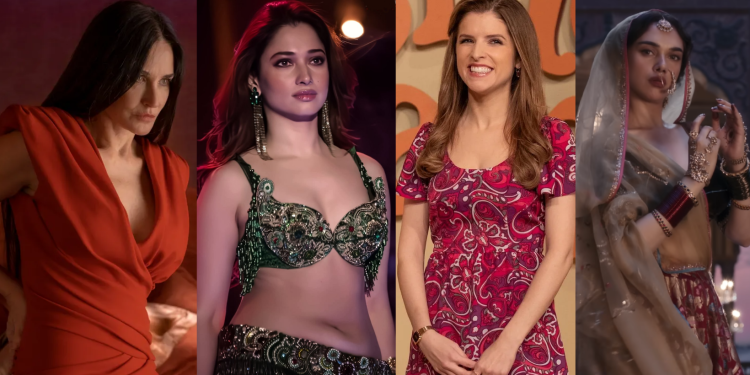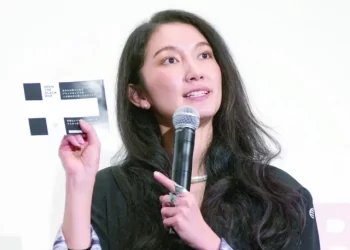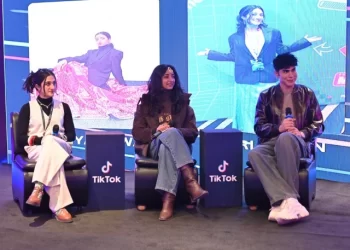2024 was a strange year for women and their bodies. The Victoria’s Secret fashion show, scrapped in 2019 over a lack of diversity, plummeting ratings, and mounting criticism, returned without fanfare — or reflection. Its revival barely registered, generating more indifference than buzz.
Social media remained as cruel as ever, sharpening its claws on women’s bodies. Margot Robbie’s pregnancy weight became fodder for the internet’s ugliest corners, denounced as “tragic” and “revolting.” In India, Deepika Padukone’s baby bump was picked apart for being “too small,” while closer to home, Hiba Bukhari was branded “shameless” for making no effort to conceal her pregnancy.
Meanwhile, 2024 saw a surge in dermatologists, cosmetic surgeons, and self-proclaimed beauty experts flooding Instagram and TikTok feeds. These specialists, who typically offer skincare tips and rank trending products, became part of a larger internet obsession: exposing the supposed cosmetic procedures of celebrities. With meticulous zoom-ins and side-by-side comparisons, these videos dissect famous faces, labelling them “natural” or “suspicious,” often in tones more punitive than educational.
While social media’s ever-expanding platforms continued to host a culture of hyper-surveillance and vitriol, women in cinema offered delicate rebuttals to the pressure to conform.
Trendsetters, naysayers
In many ways, body positivity is still a novel reckoning, often at odds with a sprawling image-fuelled economy and the very concept of fashion. Especially one where influencers and content creators have social currency and microstardoms, trends are not just born on the runway. TikTok has given us major beauty fads from looking like old money to “demure” makeup routines. Courtesy of online influencers, 2024 also had a long brush with myths such as cortisol face (your stress is to blame for that double chin allegedly) and mouth taping (a scientifically unbacked way to breathe right).
For all the scrutiny they endure, it bears repeating: bodies themselves are fashion, not just the hangers for what’s marketed as such. Corsets and bustiers have long stood as symbols of society’s obsession with moulding the body into an ideal. Kim Kardashian’s “slim-thick” curves ushered in an entire economy of implants and Brazilian butt lifts — though she continues to deny having undergone the latter. More than a decade earlier, Kareena Kapoor Khan’s size-zero transformation had carved out its own, convoluted fanbase.
In a candid appearance on Ranveer Allahbadia’s podcast, Kareena reflected on the intense dietary supervision and more than a year of work it took to achieve her famously waif-like look for the 2008 action film Tashan. Would she do it again? “I think, today everyone and anyone can do what they want to — I don’t need to be a size zero.”
Kareena’s optimism, though hopeful, may be hard to fully embrace. The much-touted cultural shift toward inclusivity might well prove to be another fleeting trend. Yet Bollywood, for all its long history of glorifying slenderness, has occasionally departed from its narrow ideals of beauty. One of the most striking cinematic moments of 2024 came from Sanjay Leela Bhansali’s lavish and divisive Heeramandi: The Diamond Bazaar, where Aditi Rao Hydari’s spellbinding “Gajagamini” walk in the song Saiyaan Hatto Jaao captivated audiences.
The elephant walk
The term “Gajagamini” translates to “majestic like an elephant’s gait.” In the Mahabharata, regal figures such as Draupadi are described as “mada-gaja-gamini” — a woman whose walk evokes the commanding elegance of an elephant in heat. By modern standards, the phrase may seem inelegant, even jarring, but its essence points to a past where beauty was defined differently, though not necessarily inclusively. History, after all, offers no era where “beautiful” truly describes everyone. In Saiyaan Hatto Jaao, Hydari channels this archetype with a sultry elegance, her deliberate, voluptuous movements rolling to the beat.
Bodies, however, take time to become. Transforming them to mirror Hydari’s curves or Kareena’s size zero demands more than just a wardrobe overhaul or a binge-watch of red-carpet highlights. And scepticism remains vital when encountering media’s seemingly earnest departures from the norm. Whether Hydari’s Gajagamini walk signals a recalibration of cinematic ideals or is merely a one-off anomaly remains a futile question. But her magnetic performance this year is a reminder of the ever-shifting — and often volatile — parameters of desirability across time and culture.









